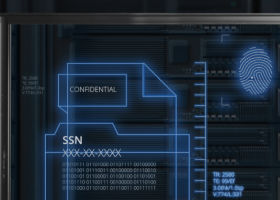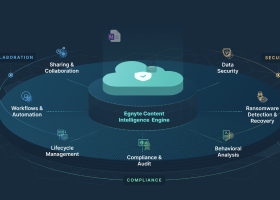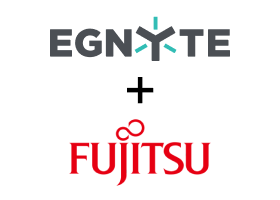Why Data Scanning is Important
Data scanning continues to become more important as the volume of collected data grows. Buried in the massive amounts of information that is collected and stored are troves of sensitive data that must be protected.

Without data scanning, it is almost impossible to protect sensitive data, such as personally identifiable information (PII), digital assets (e.g., IP addresses, login credentials, biometrics), electronic health records (EHR), and nonpublic personal information (e.g., account numbers, loan applications, account balances).
Data scanning supports the privacy, security, and governance programs that require full discovery of sensitive information.
Let’s jump in and learn:
Unsecured Sensitive Data Risks
Identity theft, fraud, and exposure of employees’, partners’, and customers’ personal information are just a few of the unsecured sensitive data risks.
Most organizations have data protection systems in place. The problem is that sensitive data risks go beyond the scope of these systems.
Sensitive information is often buried in documents that are spread throughout an organization and unprotected.
The sensitive information in these documents and files creates vulnerabilities for organizations from internal and external threats. Unsecured sensitive data risks include:
- Costly remediation
- Follow-on cyberattacks
- Litigation
- Lost sales due to a brand’s reputational damage
- Fines or sanctions related to compliance violations, such as:
What is Data Scanning?
Data scanning uses a software application to examine the files stored on systems to discover which files, if any, contain sensitive data or to find specific data. The tools locate files with sensitive and personal data and identify sensitive content that they contain.
Data scanning can target information that is sensitive according to legal and compliance mandates as well as other types of data. Organizations often have information that may not mean much to the world at large, but is still valuable. For example, data related to intellectual property or customer information could be targeted to gain a competitive advantage or to create operational disruption.

Validation of data protection for compliance requirements can also be provided with data scanning. In addition, it can be used for eDiscovery work.
Data scanning solutions are offered as software and services. A few benefits of data scanning solutions are:
- Enhanced sensitive data visibility
- Reports can be generated to show instances of sensitive data with details about the location and type.
- Customized rules can be created that define unique sensitive information.
- Inventories can be developed to track and manage sensitive data.
- Simplified data discovery
- Ability to demonstrate organizational compliance
Data scanning offers value to all organizations. Industries that have a need for data scanning include:
- eCommerce
Consumer data, including financial and personal information - Educational institutions
Health records, financial data, and personal information - Financial institutions (e.g., banks, credit unions, investment firms)
Financial records and credit or debit card information - Government
From local to federal, government organizations collect and store vast amounts of sensitive information - Healthcare organizations
Patient data that's handled on a daily basis, and the electronic medical records that are stored - Telecommunications
Data related to customers’ location, transactional data, and calling patterns
Data Scanning vs. Data Loss Prevention
Data scanning solutions locate specific files according to search parameters. When considering data scanning vs. data loss prevention, the key difference is the next step.
Data loss prevention tools can identify information, much like data scanning. However, once the targeted information is located, data loss prevention tools take action, such as sending an alert or encrypting the information. Unlike data scanning, data loss prevention is purpose-built to enforce remediation to prevent the accidental or malicious sharing of information.
Why Data Scanning Is Important
The ability to find and categorize information is valuable regardless of an organization’s size. Even small organizations generate large volumes of information that can get lost.
In some cases, this information is needed for day-to-day operations. In others, it can represent a data breach vulnerability. Data scanning is important for all organizations to support ready access to information and to protect against potential data loss.
Data scanning can also help:
- Analyze file ownership and security permissions.
- Catalog sensitive information to improve data protection.
- Discover and maintain an inventory of sensitive data that is stored to ensure that it is included in data protection programs.
- Enable content-aware protection by uncovering sensitive content and protecting it from leakage.
- Identify overexposed files and broken inheritances.
- Meet government, industry, and internal compliance requirements.
- Minimize risk of potential data breaches.
- Provide insight into storage patterns by analyzing usage to reduce costs.
- Reduce sensitive data footprint by identifying information that can be deleted or that should be encrypted.
- Uncover redundant, outdated, trivial and stale (ROTS) data that can pose a security risk or increase data storage costs.
- Verify sensitive data protection for compliance requirements.
Data Scanning and Data Breaches
To effectively protect against data breaches, data scanning must take into account both structured and unstructured data. Structured data is coded and organized based on a specific format that makes data scanning easy. Unstructured data, which represents a significant portion of the data that organizations store and manage, presents unique challenges for data scanning.

Sophisticated data scanning tools are available to help locate sensitive information residing in unstructured data—both on-premise and in the cloud.
Because data scanning can be used to find sensitive data where it resides regardless of whether it is in a structured or unstructured format, it can be a valuable security tool. Using data scanning as part of security programs helps with data loss prevention and to reduce the damage that can be done in the event of a data breach.
Protect and Access the Data You Can’t See
Data scanning is a versatile tool that is well worth the investment for any organization:
- Secure sensitive data wherever it resides.
- Locate digital assets that can be used for other projects.
- Operationalize data scanning for eDiscovery efforts.
Data scanning offers far more benefits than those that are immediately apparent.
Egnyte has experts ready to answer your questions. For more than a decade, Egnyte has helped more than 16,000 customers with millions of customers worldwide.
Last Updated: 23rd December, 2021




